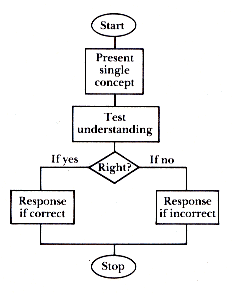The Academic A
By:
Lloyd R. Printice
Professor Pavlov taught his dog to salivate...
Dr. Skinner taught his pigeons how to play ping pong
Who should control the learning process--the educator through the medium of the computer? Or the learner? This is one of the major debates in educational computing circles.
In the late 1950's, researchers at IBM suggested that the computer could be a powerful medium of instruction. At the time, stimulus-response theory (S-R) was the rage among behavioral scientists, S-R, a theory of learning based upon Dr. B.F. Skinner's wartime work with pigeons and, earlier, Professor Pavlov's work with salivating dogs, essentially argues that you can shape, or condition, the response of an organism to a stimulus through timely reward and punishment. Guided by these notions, Professor Pavlov taught his dog to salivate in response to the ringing of a bell, and Dr. Skinner taught his pigeons how to play ping-pong.
Dr. Skinner took the notion a step further by suggesting that the conditioning process could be mechanized, and building a number of mechanical devices to prove his point. This was the beginning of teaching machines.

|
Based on this theory, the people at IBM suggested that the computer was potentially a much better teaching machine than the difficult-to-program and unreliable mechanical devices of the time. Other researchers at the University of Illinois, Stanford University and elsewhere around the country subsequently accumulated weighty evidence that, indeed, IBM was on the right track. One of the most impressive systems to come out of this work was Control Data Corporation's Plato system, largely developed at the University of Illinois.
This classical computer-assisted instruction (CAI), as exemplified by Plato, is founded upon a simple algorithm. On the Atari, it would take about 10 minutes to develop a simple learning program based upon this system. It looks like Fig. 1.
In theory we know you can dissect the most complex subject into a number of single concepts or ideas. Each of these ideas is embedded into the CAI algorithm, in turn connecting the resulting modules into the proper sequence. Once done, learning can proceed without the intervention of a teacher.
But to evaluate software based upon this algorithm, you need to ask several questions:
- How interesting, clear and concise is the presentation of the idea?
- What, exactly, is being tested and how reliably?
- How appropriate are the responses to both the correct and the incorrect cases?
The bottom line is: who learns what, how well and how quickly?
All of this brings us to the subject of this month's review:Dorsett Educational Systems, Inc.
Located in Norman, Oklahoma, Dorsett has developed 28 self-study courses for presentation on the Atari 400 and 800 with cassette player and educational cartridge. The courses range from Algebra to World History. They include such diverse topics as Construction, Digital Electronics, Philosophy and Spanish/English. Each course comprises 16 programs and costs $79. A program cassette consists of approximately 40 frames, or units of information. You can buy any of these cassettes for $9.90.
Each program in the Dorsett series follows the same format. When you begin the tape, a pleasant voice with a Midwestern drawl narrates the lesson. If you are working your way through program three of the physics course, for instance, you would hear the following:
"We've already learned that the kinetic energy possessed by a moving mass is equal to one-half the mass times the velocity squared. E-1/2MV2 . A rotating flywheel has energy too, although it may not be moving anywhere, just rotating. What part of physics deals with the energy of moving matter?"
As the narrator talks, the text appears on your monitor, more or less in sync with the voice. Occasionally an illustration appears, crudely constructed out of the ATASCI character set.
At the end of the frame, two or three alternative answers to the narrator's question appear on the bottom of your screen. You respond by typing the numbers 1, 2 or 3 on the keyboard. If you respond incorrectly, you hear a nasty raspberry sound, and the frame remains on the screen, waiting for you to respond again. If you respond correctly, the lesson proceeds to the next frame, and the narrator's first phrase is a reinforcer such as "Right."
When I demonstrated "Vowel Sounds," which is program 15 of "English as a Second Language," to the graduate class that I teach at Boston University, the class responded with catcalls--"It's boring!" or, "It doesn't use the medium appropriately." But one foreign student disagreed. "I wish I'd had that when I was learning English," she said.
In short, I'm not sure who'll learn what from the Dorsett material. Dorsett seems to have done to a host of interesting subjects what a decade of desert sun does to a bone. But if it's meat and potatoes that you're after or if all you want is a C- on a physics mid-term that you neglected to study for, maybe Dorsett can help you out. But Dorsett is not Plato, nor classical CAI at its best.
In future reviews we'll look at some of the alternatives to the classical approach to computer-assisted instruction.
Lloyd R. Prentice heads Prentice Associates, Inc., software and book developer for major publishers. He was the founding editor of Classroom Computer News.